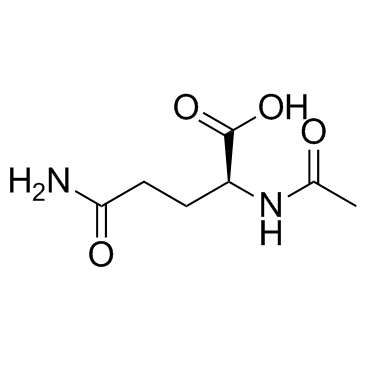Absorption of enterally administered N-acetyl-l-glutamine versus glutamine in pigs.
Alexandra Arnaud, Maria Ramírez, J H Jeffrey H Baxter, A J Antonio J Angulo
Index: Clin. Nutr. 23 , 1303-1312, (2004)
Full Text: HTML
Abstract
Glutamine instability in liquid media suggests that evaluation of reasonable enteral nutrition sources of glutamine is needed. N-acetyl-l-glutamine offers no instability and no intolerance problems. This research was conducted to study the absorption and apparent digestibility of glutamine versus N-acetyl-l-glutamine.Two pig models were used. (1) In a clamped jejunal loop experiment, we measured the concentrations of glutamine and N-acetyl-l-glutamine in the intestinal infused solutions, intestinal mucosa, and portal and peripheral blood. (2) In a feeding experiment, we determined their apparent digestibility.N-acetyl-l-glutamine ( approximately 76%) was slightly less absorbed than glutamine ( approximately 85%) from the intestinal lumen into mucosa, where it was not detected as intact molecule, suggesting almost complete hydrolysis during absorption. Virtually no intact N-acetyl-l-glutamine was observed in the blood compartments; glutamine from lumenal N-acetyl-l-glutamine had the same behavior as that from lumenal-free glutamine in portal and peripheral blood. The apparent ileal digestibility of N-acetyl-l-glutamine was lower than that of free glutamine, as N-acetyl-l-glutamine was probably retained in the intestinal lumen to a greater extent than glutamine.N-acetyl-l-glutamine appeared to be a good candidate for glutamine fortification of enteral nutrition formulas.
Related Compounds
| Structure | Name/CAS No. | Molecular Formula | Articles |
|---|---|---|---|
 |
Aceglutamide
CAS:2490-97-3 |
C7H12N2O4 |
|
Liquid chromatographic-mass spectrometric analysis of N-acet...
1994-07-01 [J. Chromatogr. B, Biomed. Appl. 657(1) , 15-21, (1994)] |
|
Availability of glutamine from peptides and acetylglutamine ...
1989-08-01 [Metab. Clin. Exp. 38(8 Suppl 1) , 40-2, (1989)] |
|
Understanding carbamoyl-phosphate synthetase I (CPS1) defici...
2010-07-01 [Hum. Mutat. 31(7) , 801-8, (2010)] |
|
NMR and MS analysis of decomposition compounds produced from...
2000-12-01 [J. Agric. Food Chem. 48 , 6003-6010, (2000)] |
|
N-acetyl-L-glutamine, a liquid-stable source of glutamine, p...
2007-03-01 [Dig. Dis. Sci. 52 , 650-658, (2007)] |